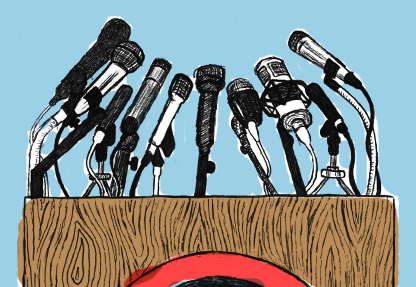The Seven Deadly Sins: Pride
 On June 26, 2000, three famous men — one president, two scientists — made a big announcement at the White House. Two independent teams — one public, one private — had published a first draft of the human genome, or as one of the scientists called it, the “book of life.” It was a feat. It would change the world. It would “revolutionize the diagnosis, prevention and treatment of most, if not all, human diseases,” the president said. Everybody was proud.Ten years later, a journalist at a big newspaper pointed out that, well, no, the $3 billion we spent on the human genome — a dollar for each pair of DNA letters — had not bought us the ability to diagnose, prevent or treat common diseases. The genome had revolutionized basic biology, sure, but done little for human health.The newspaper article made a lot of scientists angry. (Some of them are still sputtering about it at conferences.) It also launched a broader discussion about science communication and hype. A month ago, I went to a public event at the American Museum of Natural History, in Manhattan, called “The Human Genome and Human Health: Will the Promise Be Fulfilled?” Four experts on genetics, medicine, ethics and law discussed whether the promises of that 2000 announcement would ever come true. The general consensus was that the White House hoopla had raised expectations much too high, inevitably leading to disappointment. Pride goeth before the fall.As a journalist, I hate hype, and I will never argue that journalists should be anything but skeptical of scientific advancements. But I recently learned that, like all of the Seven Deadly Sins, pride is necessary for survival. So I wonder, does science need hubris?Read more at...The Last Word on Nothing, December 2011.
On June 26, 2000, three famous men — one president, two scientists — made a big announcement at the White House. Two independent teams — one public, one private — had published a first draft of the human genome, or as one of the scientists called it, the “book of life.” It was a feat. It would change the world. It would “revolutionize the diagnosis, prevention and treatment of most, if not all, human diseases,” the president said. Everybody was proud.Ten years later, a journalist at a big newspaper pointed out that, well, no, the $3 billion we spent on the human genome — a dollar for each pair of DNA letters — had not bought us the ability to diagnose, prevent or treat common diseases. The genome had revolutionized basic biology, sure, but done little for human health.The newspaper article made a lot of scientists angry. (Some of them are still sputtering about it at conferences.) It also launched a broader discussion about science communication and hype. A month ago, I went to a public event at the American Museum of Natural History, in Manhattan, called “The Human Genome and Human Health: Will the Promise Be Fulfilled?” Four experts on genetics, medicine, ethics and law discussed whether the promises of that 2000 announcement would ever come true. The general consensus was that the White House hoopla had raised expectations much too high, inevitably leading to disappointment. Pride goeth before the fall.As a journalist, I hate hype, and I will never argue that journalists should be anything but skeptical of scientific advancements. But I recently learned that, like all of the Seven Deadly Sins, pride is necessary for survival. So I wonder, does science need hubris?Read more at...The Last Word on Nothing, December 2011.